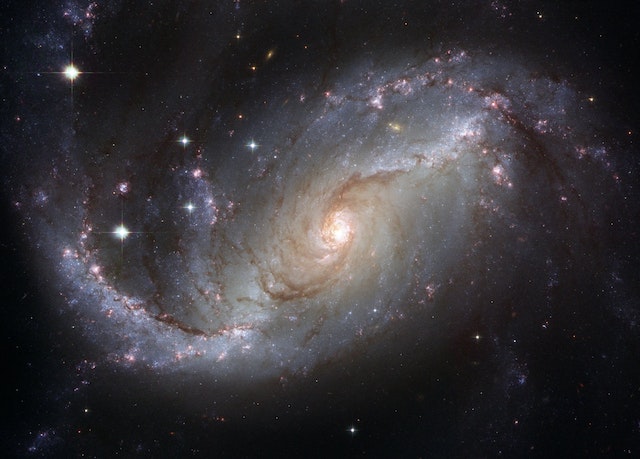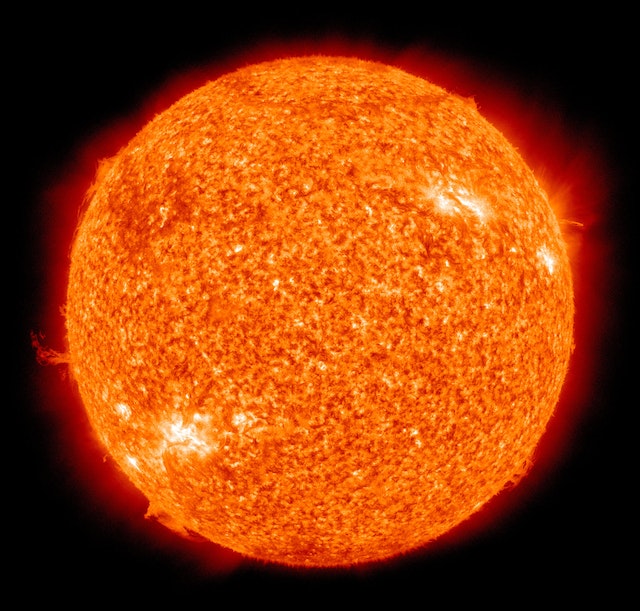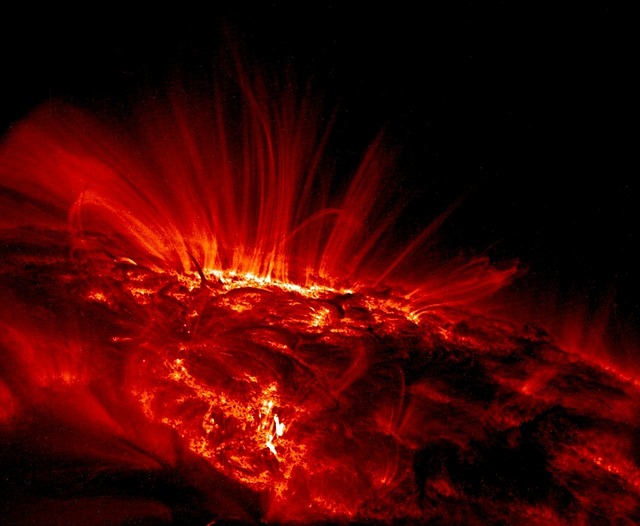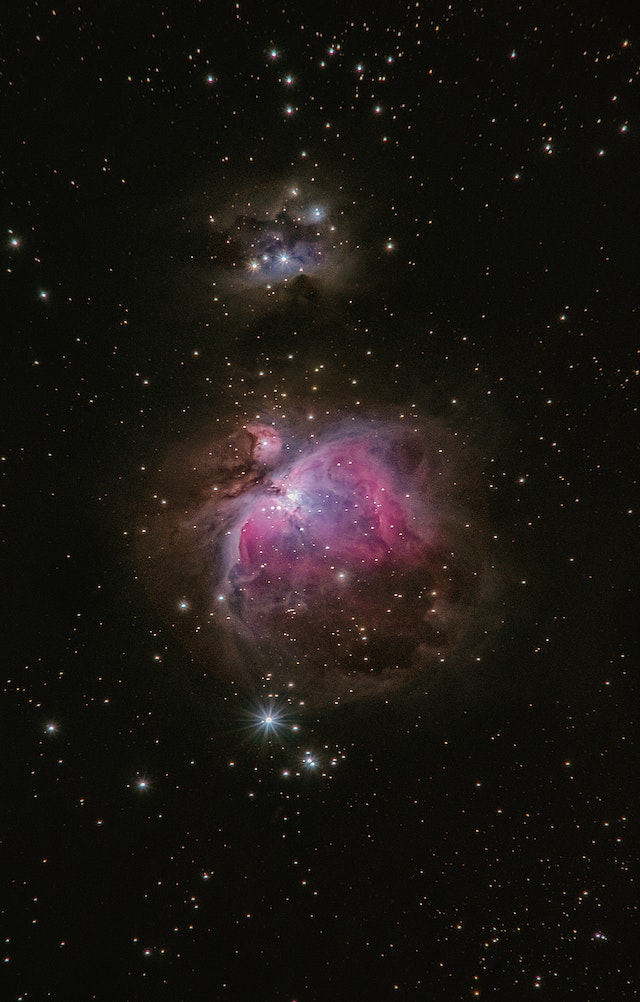
Through telescopes and other instruments, astronomers had peered into the depths of space, uncovering stars and galaxies, each containing billions of stars. They had studied the physics of black holes, the evolution of galaxies, and the mysteries of dark matter and dark energy and even explored space.
But even with all the knowledge gained, there was still so much more to uncover. The universe continued to expand, stretching out beyond what we could see, and still held secrets that had yet to be revealed.
As humans looked up at the stars and galaxies, they couldn’t help but wonder: what other wonders lay hidden in the vast expanse of space? What other mysteries could we uncover through astronomy, and what impact could they have on our understanding of the universe and our place in it?
Types of Stars
As humans gaze up at the night sky, they witness a multitude of stars, each with its own unique characteristics. Stars come in various sizes, colors, and compositions, and their diverse nature holds many secrets waiting to be unraveled.
Red Dwarfs
Red dwarfs, also known as M-type stars, represent the most common type of stars in the universe. These small, cool stars often emit a reddish glow due to their relatively low surface temperatures. Despite their diminutive size, red dwarfs can live for hundreds of billions of years, making them potential harbors for habitable exoplanets.
Yellow Dwarfs
Our very own Sun belongs to the category of yellow dwarfs, also referred to as G-type stars. These stars exhibit a vibrant yellow hue due to their moderate temperatures and produce energy through the process of nuclear fusion. Yellow dwarfs provide the necessary conditions for planets like Earth to sustain life, thanks to their stable output of heat and light.

Red Giants
Red giants, often referred to as evolved stars, mark the later stages of a star’s life cycle. These massive stars expand to many times their original size as they exhaust their nuclear fuel. During this process, red giants shed their outer layers, creating stunning cosmic phenomena like planetary nebulae.
Blue Giants
Blue giants, also known as O-type stars, capture attention with their striking blue appearance. These massive stars, thousands of times more luminous than our Sun, emit intense ultraviolet radiation. Due to their enormous energy output, blue giants have relatively short lifespans, often ending dramatically as supernovae.
White Dwarfs
White dwarfs represent the remnants of low to medium mass stars after they have exhausted their nuclear fuel. These incredibly dense stars, roughly the size of Earth, are composed mainly of electron-degenerate matter. With no active fusion reactions occurring, white dwarfs slowly cool down over billions of years, gradually fading away.
Neutron Stars
Neutron stars emerge from the explosive demise of massive stars in a supernova event. These mind-bogglingly compact objects possess an unimaginable density, composed mostly of neutrons. Neutron stars exhibit phenomena such as ultra-strong magnetic fields and pulsars, emitting beams of radiation as they rapidly rotate.
Black Holes and Their Properties
Black holes, perhaps the most enigmatic objects in the universe, are formed by the gravitational collapse of massive stars. These regions of spacetime possess an extremely powerful gravitational pull, devouring everything that comes within their event horizon.
Black holes can range in size, from stellar black holes to supermassive black holes, residing at the centers of galaxies. Their properties, such as Hawking radiation or the potential existence of wormholes, continue to captivate the imaginations of scientists and science fiction enthusiasts alike.
The Sun
The Sun, our closest star, has been captivating humanity since the dawn of time. With its fiery demeanor and life-giving energy, it reigns supreme in our solar system, orchestrating the dance of planets and shaping our very existence.
The Sun, labeled as a G-type main-sequence star, contains about 99.8% of the total mass in our solar system. Radiating an intense, blinding light, the Sun’s surface temperature reaches a staggering 5,500 degrees Celsius, making it the ultimate cosmic furnace.

Solar flares, dramatic eruptions of energy, occur as a result of magnetic activity on the Sun’s surface, unleashing astonishing displays of light and charged particles into space.
Sunspots and Solar Activity
Sunspots: Dark, cooler regions on the Sun’s surface, sunspots are caused by intense magnetic activity inhibiting convective heat transport. These areas possess powerful magnetic fields and often accompany solar flares.
Solar Wind: The Sun constantly emits a solar wind, a stream of charged particles including protons and electrons, which shapes the heliosphere and interacts with Earth’s magnetic field, giving rise to phenomena such as auroras.
Solar Cycles: The Sun experiences an 11-year cycle of solar activity, defined by variations in sunspot number and solar flares. These cycles have implications for space weather, affecting communication systems and satellite operations.
Star Clusters and Constellations
As humans looked up at the night sky, they couldn’t help but notice the patterns formed by groups of stars. These patterns, known as constellations, have fascinated and guided humans for centuries. Alongside these constellations, star clusters have also captured the attention of astronomers.
Star Clusters
Open clusters are groups of stars that formed from the same molecular cloud. They usually contain young stars, and their formation is a result of gravitational forces acting on the cloud. Open clusters can hold as few as a dozen stars or as many as thousands. These clusters are relatively loose and appear scattered when viewed from Earth. Examples of open clusters include the Pleiades and the Beehive Cluster.
Globular Clusters
Globular clusters, on the other hand, are tight-knit, spherical gatherings of stars. These clusters hold hundreds of thousands, or even millions, of stars in a confined space. Unlike open clusters, globular clusters have a more ancient origin, dating back billions of years. They are often found in the halo of galaxies, orbiting around the galactic center. Notable globular clusters include Omega Centauri and Messier 13.
Constellations

Zodiac Constellations
The Zodiac constellations are a group of twelve constellations that lie along the ecliptic, the apparent path of the Sun across the sky. These constellations hold astrological significance and are often associated with specific dates and personality traits. The Zodiac constellations include Aries, Taurus, Gemini, Cancer, Leo, Virgo, Libra, Scorpius, Sagittarius, Capricorn, Aquarius, and Pisces.
Circumpolar Constellations
Circumpolar constellations are a unique set of constellations that never fully set below the horizon due to their proximity to the celestial poles. Depending on the observer’s latitude, different constellations can be considered circumpolar. For example, the Big Dipper, part of the Ursa Major constellation, is a famous circumpolar object in the northern hemisphere.
Mythological Constellations
Many constellations are named after characters and creatures from ancient mythology. These constellations often tell stories of heroes, monsters, and gods. Examples include Orion, the hunter, who is depicted with his belt and sword, and Cassiopeia, the queen of Ethiopia, whose distinctive “W” shape can be seen in the night sky.
Galaxies: The Building Blocks of the Universe
As humans looked up at the night sky, they marveled at the vastness of space and the countless celestial bodies within it. Among these celestial wonders are galaxies, the colossal structures that house billions of stars, planets, and other cosmic entities.
Spiral Galaxies
As the name suggests, spiral galaxies form elegant spiraling arms around a central bulge. These stunning galaxies showcase intricate patterns, often resembling disks or pinwheels. The Milky Way, our home galaxy, belongs to this category. Spiral galaxies typically contain a significant amount of gas and dust, giving birth to new stars and fostering a lively cosmic environment.
Elliptical Galaxies
Elliptical galaxies exhibit a smooth and elongated shape, ranging from nearly spherical to highly elongated ellipsoids. Unlike spiral galaxies, they lack distinct arms or disks. Elliptical galaxies are often populated with older stars and have fewer active star-forming regions. These galaxies come in a variety of sizes, with the largest ones containing trillions of stars.
Irregular Galaxies
Irregular galaxies, as their name implies, defy traditional shapes and exhibit a chaotic and asymmetric appearance. They are characterized by a lack of organized structure, often displaying an assortment of clumps, loops, and wisps. Irregular galaxies can be the product of galactic collisions or intense gravitational interactions, leading to their distinctive formations.
Lenticular Galaxies
Lenticular galaxies, also known as S0 galaxies, present a transitional form between spiral and elliptical galaxies. They possess a prominent central bulge similar to elliptical galaxies but lack the well-defined arms of spiral galaxies. Lenticular galaxies often contain older stars, similar to elliptical galaxies, but also harbor some ongoing star formation.
Features and Phenomena
Galactic Nucleus:
At the heart of each galaxy lies its nucleus, a compact region with high concentrations of stars and other celestial objects. The nucleus acts as the gravitational center, exerting control over the motions of the surrounding stars. In some galaxies, a supermassive black hole resides at the core, exerting immense gravitational influence and unleashing powerful energy jets.

Halo:
Surrounding the visible disk of a galaxy is a mysterious region called the halo. The halo contains a sparse population of stars and globular clusters, as well as large amounts of dark matter. Dark matter, although invisible, plays a crucial role in the formation and dynamics of galaxies, providing the gravitational scaffold upon which galaxies are built.
Galactic Collisions:
Galaxies, despite their immense sizes, can collide and merge over cosmic timescales. These collisions can result in the formation of new galaxies, as well as dramatic transformations in the shapes and structures of the merging galaxies. Through these cosmic encounters, galaxies exchange material, trigger bursts of star formation, and contribute to the ongoing evolution of the universe.
Active Galactic Nuclei
Some galaxies possess hyperactive cores known as active galactic nuclei (AGN). These AGN emit powerful beams of radiation, jets of high-energy particles, and a brilliant glow across multiple wavelengths. Supermassive black holes, surrounded by a swirling disk of gas and dust, fuel these energetic displays. AGN play a significant role in shaping the environment of their host galaxies.
The study of stars and galaxies has fascinated humanity for centuries. Through telescopes and advancements in technology, humans have been able to delve deeper into the vast expanse of space, uncovering the secrets of stellar evolution, galactic dynamics, and the enigmatic properties of dark matter and energy. Yet, as our understanding grows, so does our recognition of the infinite possibilities that lie beyond our current grasp. The universe continues to expand, offering limitless opportunities for exploration and discovery. With every new revelation, we come closer to unraveling the intricacies of the cosmos and our place within it.
